How Contract Workers Can Help Public Sector Workloads In The New Financial Year

By Emily Harris
The pandemic’s impact on workloads over the last two years has varied significantly depending on both the individual and the different industries they worked in. During the height of the pandemic, numerous individuals and particular industries like hospitality and tourism suffered greatly, with many individuals’ workloads being reduced significantly. However, workloads for those within industries like health and critical infrastructure almost doubled, as Australia worked through the COVID-19 crisis. One industry, in particular, that was put under extensive pressure was Australia’s public sector which was at the forefront of navigating and rolling out the country’s recovery efforts. From the onset of the COVID-19 pandemic crisis in early 2020, Australian Public Service organisations had to adapt within a short timeframe to a new operating environment (with so many employees forced to at least temporarily work remotely) and position themselves to handle a surge in demand for government services – from the vaccine roll out to providing Centrelink and other financial aid for individuals and small businesses.
According to the Australian Public Service Commission, during the height of COVID-19 in 2020, APS employees took fewer breaks from work than usual and unscheduled absences were 25% lower per employee compared with the previous year[1] (Nuance Communications, 2022). However, while many industries are beginning to return to similar workloads prior to COVID-19, the pressure for public sector employees - and particularly government agencies - isn’t getting any lighter. Many organisations are still managing the effects of the pandemic while tackling the unique challenges faced by the public sector; tightened budgets, limited resources and a growing demand from the general public. In fact, in a recent survey of professionals within the public sector conducted by the computer software technology company Nuance Communications, more than half of the respondents reported to have taken on additional responsibilities since the pandemic to help support their organisation, and 92% of these respondents still had these additional responsibilities under their belts two years on, which increased their overall workload (2022). Furthermore, nearly three-quarters of respondents reported experiencing work-related stress – especially over the last two years.
There’s no doubt that the Public Sector shows no signs of slowing down, as indicated by the federal budget delivered in March this year. The majority of initiatives outlined, like the Government’s $120 billion 10-year infrastructure investment pipeline and the $2 billion Regional Accelerator Program that promises to create jobs across Regional Australia, will require significant involvement from state government and local councils[2] (Australian Government, 2022). Furthermore, the public sector overall is currently in the midst of a digital transformation where organisations are in the process of transitioning many key services to an online environment, upgrading back-office systems to make organisations more agile and upgrading their cyber security and cloud software[3] (Brockhoff, 2022). However, with these recent reports of overworked and stressed employees, public sector organisations will need to think carefully about how they can maintain productivity levels. In order to maintain their talent, both state and local government agencies will need to consider how they can better support their employees in their day-to-day roles, ensure workloads are manageable and reduce the risk of burnout.
Luckily, the start of a new financial year poses a unique opportunity for many public sector organisations. Traditionally the end of June/start of July is when organisations reassess their priorities and goals for the next fiscal year (2022 -2023), prioritise what projects need to be delivered for the year ahead and allocate the budgets for these projects[4] (Johnson, 2021). If your organisation finds that you have leftover funds from the previous financial year or have been provided with a bigger budget for an allocated project, this could be the perfect time to relieve the workloads of fellow team members and hire additional staff.
Alternately, for those that don’t have a big budget to play with in the new financial year, yet a number of tight project deadlines to be delivered in 2022/23, a compromise could be looking into employing a number of contract workers:
The benefits of hiring independent contractors
Temporary and contract work provides numerous benefits to both the organisation and the individual contractor. In light of the turmoil and rapid rate of change across the workforce over the last few years, many organisations’ original hiring forecasts were derailed. In periods of uncertainty, being able to hire contractors rather than permanent employees can be a great solution for organisations looking for an agile way of managing headcounts and budgets. Consequently, while organisations continue to manage the constantly changing COVID-19 position and resources on a tight budget, contract roles are a viable option.
Contract workers also bring with them a very diverse and varied skill set, as they’ve had experience working across multiple organisations and systems. Their varied experience indicates that they’re equipped to identify and resolve a greater range of issues and have developed an outside-in approach to problem-solving. This can be advantageous to an organisation, as a fresh pair of eyes can observe ways to make frameworks and systems more efficient. A contract worker - especially in a specific or specialist area – brings particular expertise that is difficult to find and not necessarily required on a daily basis. This means they can fill any knowledge gaps a team might have while offering greater flexibility as the organisation doesn’t have to commit to a contractor long-term and can release them at short notice without financial penalty.
How to attract & appeal to contractors
The challenge for organisations and companies looking for contract and casual workers moving forward is to gain traction in the marketplace as demand in the contract space grows. Differences in the needs and wants of temporary workers vs. permanent workers are subtle but still distinctive. Consequently, it’s important that organisations are aware of these needs and know how to meet them in order to effectively appeal to and attract the desired market. Because as in any form of recruitment, the aim is never just to fill a role but to fill it with the right person.
According to Linkedin data the key factors contractors value when considering a job are similar to that of a permanent worker; strong compensation and benefits options, a good work-life balance and positive workplace culture. In a recent Linkedin survey that spoke to U.S contractors, 64% of respondents voted for strong compensation, 59% voted for work-life balance and 44% voted for workplace culture. A Harvard Business Review Talent Trends survey found similar results, claiming that contractors were more invested in salary than full-time workers and rated company culture and learning new skills within a role, highly. Consequently, for a contract role to appear more desirable to candidates, it’s recommended that organisations ensure they can meet these requirements; do they offer flexible working options to their contract workers? Can they offer competitive rates? Will contractors be entitled to professional development resources or networking opportunities with the wider organisation?
According to Linkedin’s data, contractors are also more engaged on Linkedin than the average worker; they are 1.6 times more likely to respond to InMails and 1.8 times more likely to engage with content. This makes sense as contractors need to keep a regular eye on the job market so they’re ready to pounce on their next gig. For an organisation, this insight suggests that putting a bigger focus on Linkedin as opposed to other platforms could be beneficial in reaching a bigger pool of candidates. Linkedin also suggests that if an organisation is trying to demonstrate thought leadership, their data has shown contractors engage the most with topics revolving around career growth, self-improvement, employee engagement and social media marketing.
Finally, if organisations have specific recruitment needs in regards to their contract work, it can be beneficial to reach out to a recruitment organisation that specialises within your particular industry or deals with contract roles. For example, because Public Sector People focuses solely on recruiting within the public sector, a significant portion of contract roles we work on are contract roles. This focus has ensured our consultants have built strong relationships with a number of candidates and are well versed in what will and won’t draw talent to a contract role.
If you’re looking to fill a particular contract position in the new financial year or advice on whether contracting would work for your organisation, don’t hesitate in reaching out to our specialised consultants.
[1] Nuance Communications. (2022). Report: Public Sector Strategies For 2022. Nuance Communications. Retrieved from: https://www.nuance.com/content/dam/nuance/en_au/collateral/dragon/brochure/dr-hc-nuance-dragon-survey-gov-en-au.pdf
[2] Australian Government. (2022). Budget 2022-23. Australian Government. Retrieved from: https://budget.gov.au/
[3] Brockhoff, A. (2022). These Are The Challenges Hindering A Digital Shift In Australia’s Public Sector. BusyContinent. Retrieved from: https://busycontinent.com/new-study-reveals-digital-shift-challenges-in-australias-public-sector/
[4] Johnson, C. (2021). Public Sector Winners In Big Spending Budget. The Mandarin. Retrieved from: https://www.themandarin.com.au/156464-public-sector-winners-in-big-spending-budget/








Job Sectors
All content copyrighted | Privacy Policy | Cookie Policy | T&Cs | Powered with 💙 by Shazamme




